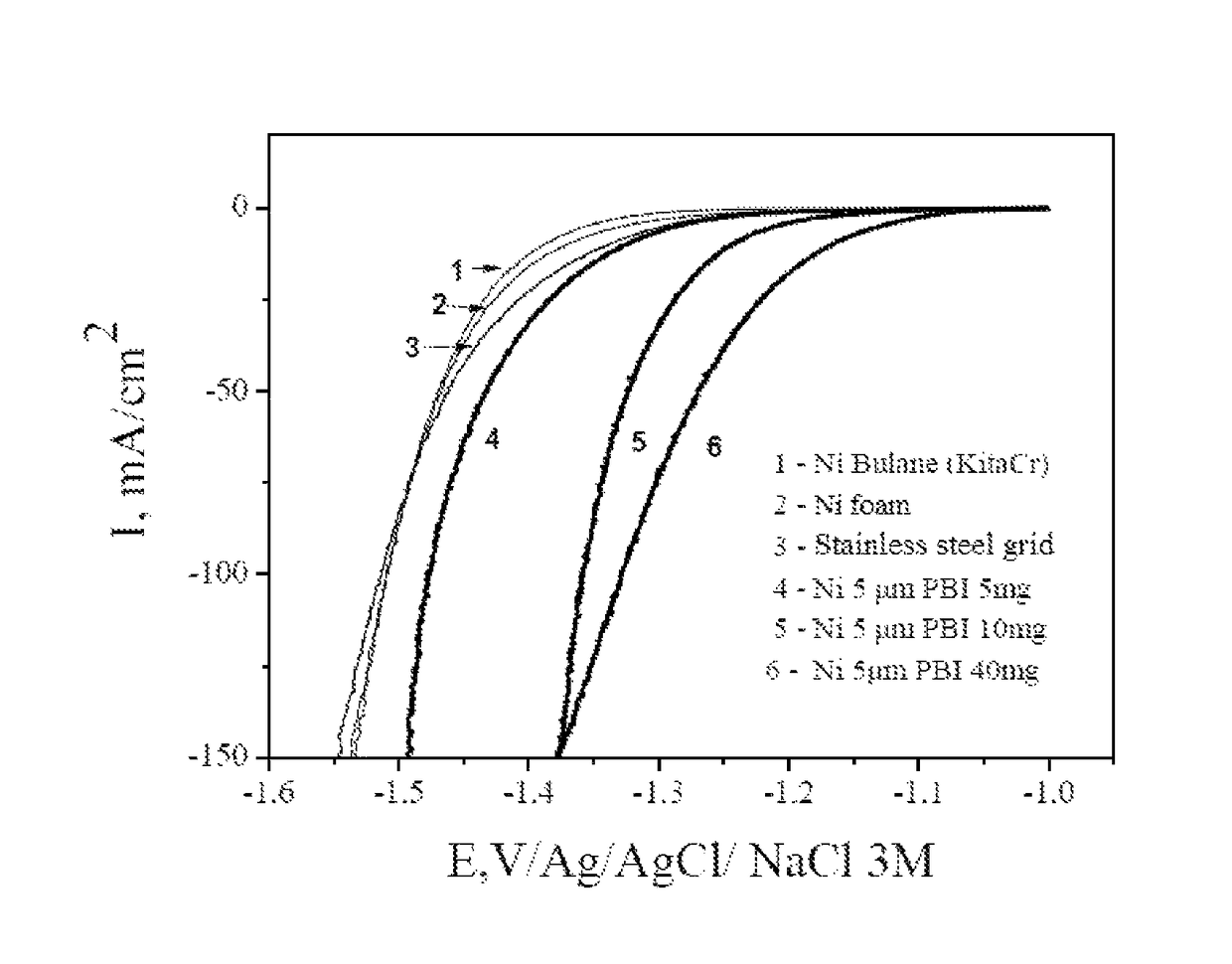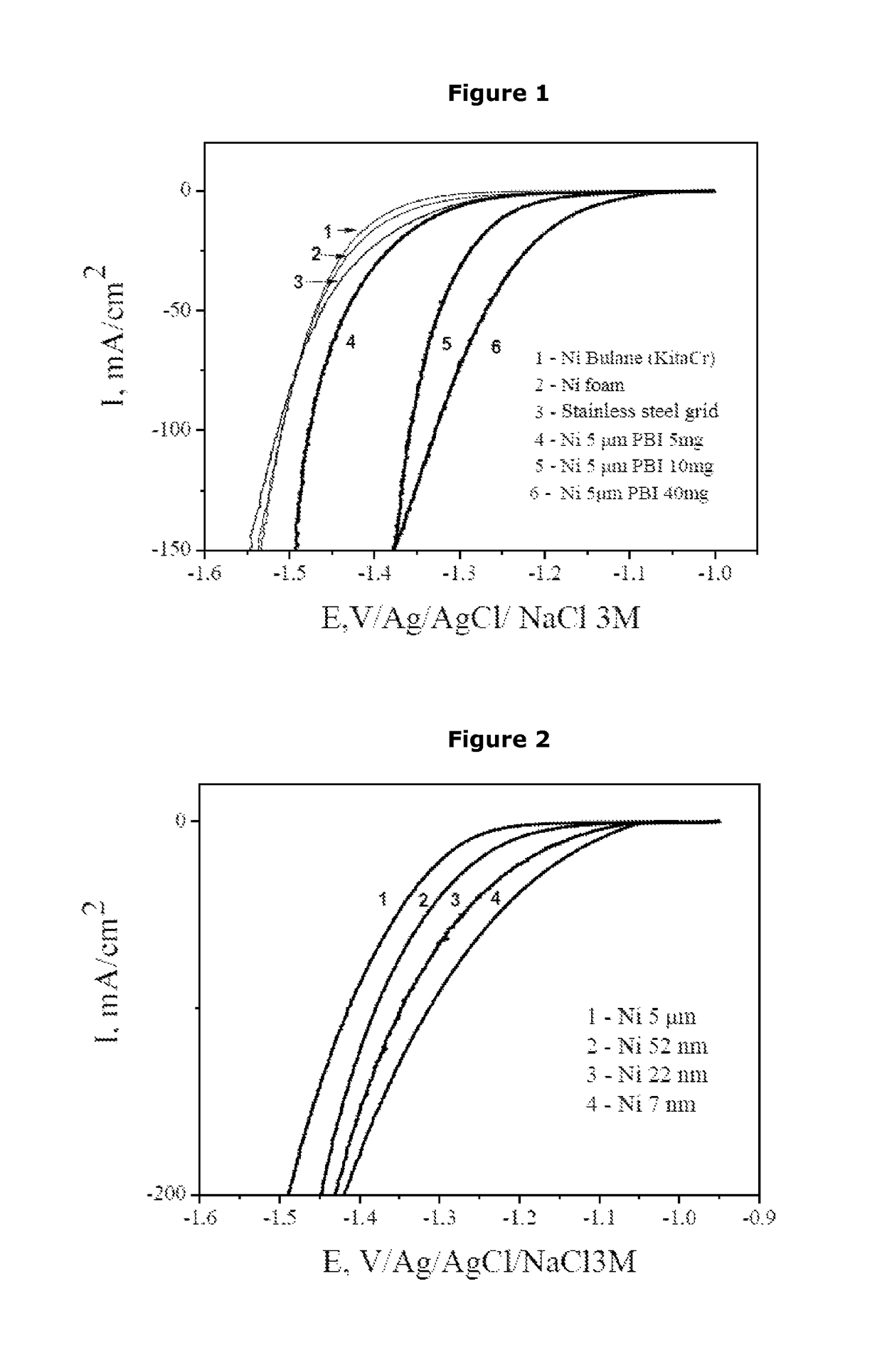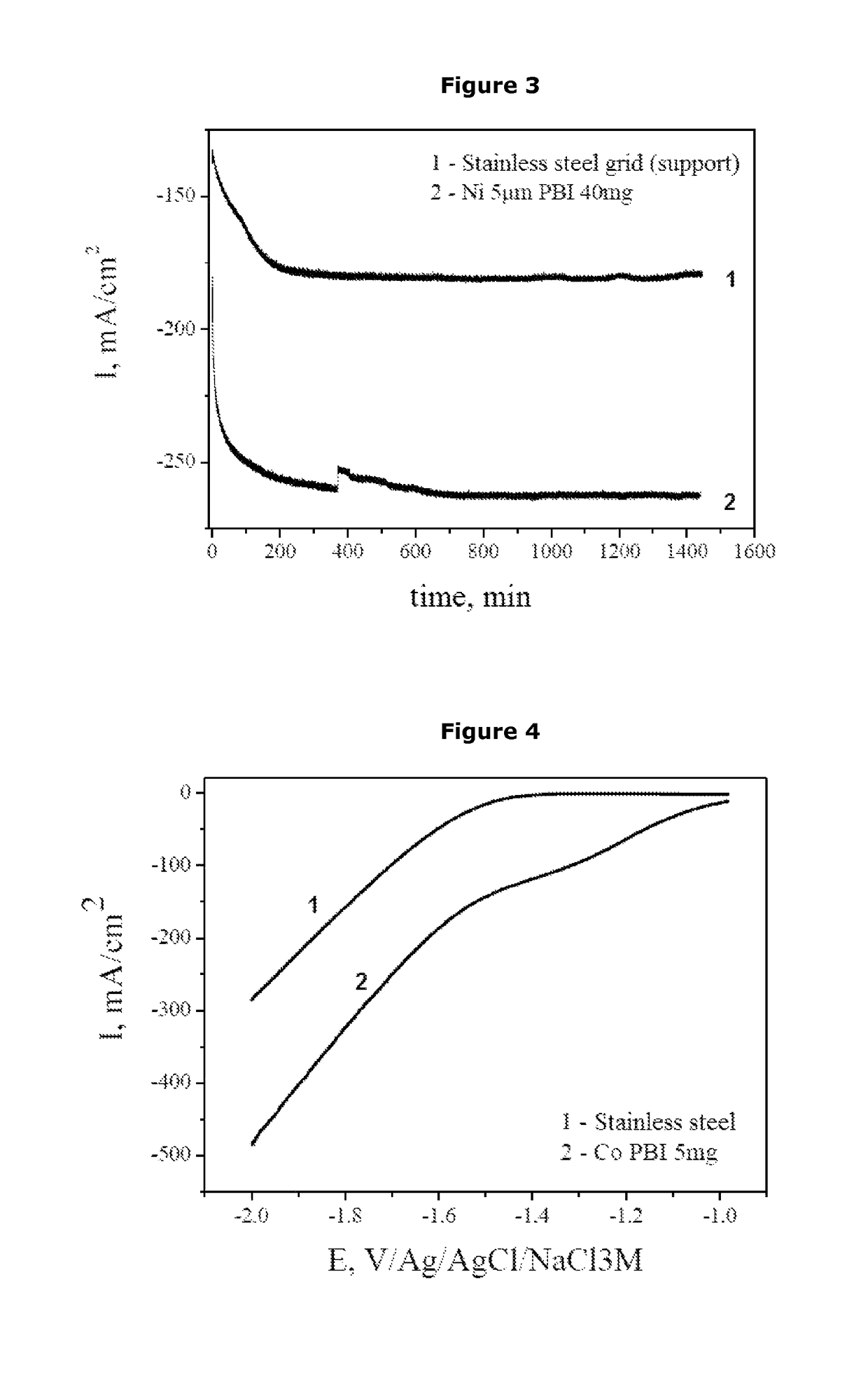Composite electrodes for the electrolysis of water
a technology of electrolysis and composite electrodes, applied in the direction of electrode coatings, energy input, multiple component coatings, etc., can solve the problems of large co2 emission, large tonnage of oxygen required by other methods, and large tonnage of oxygen, etc., to achieve the effect of improving the performance of the electrode according to the invention, enhancing the associated performance, and maximizing the surface area
- Summary
- Abstract
- Description
- Claims
- Application Information
AI Technical Summary
Benefits of technology
Problems solved by technology
Method used
Image
Examples
example 1
on of the Electrodes
1.1. Material
[0099]The electrodes are manufactured on the basis of commercial micrometric Ni powders (5 μm, purity 99.7%, Aldrich), Co (>99.8%, Fluka), Co3O4 (>71% Co, Fluka) and laboratory-synthesized submicrometric and nanometric powders.
1.2. Preparation of the Support
[0100]A grid of 316L stainless steel (Gantois ref. no. 42.73 FR 0.25) is cut out and folded back on itself lengthwise, in order to obtain the final dimension of the electrode.
1.3. Preparation of the Electrode by Moulding the Film
[0101]1.3.1 Preparation of the Film
[0102]A mixture comprising 90% by mass of a catalytic powder and 10% by mass of polymer binder (PBI) is dissolved at a rate of 5% by mass in dimethyl sulphoxide (DMSO).
[0103]A mould is produced using a self-adhesive Teflon® film deposited on a previously cleaned glass plate. A volume of the catalytic powder—PBI mixture is deposited in the mould. The volume of deposited mixture is suitable for the final quantity of catalytic powder desired...
example 2
ization of the Electrodes Based on Micrometric Nickel Powders and PBI
[0107]The catalytic activities of the electrodes according to the invention are determined from the polarization curves. The measurements were carried out in a standard cell with three electrodes (Ag / AgCl / 3MNaCl reference electrode, platinum counter electrode, and work electrode corresponding to the electrode to be characterized). The set of characterizations was carried out at ambient temperature in a 1 mol / L solution of potassium hydroxide.
[0108]A commercial nickel powder having an average particle diameter of 5 μm and PBI is used. The composite electrodes based on nickel powder are prepared by moulding and have a Ni powder loading rate of 5, 10 and 40 mg / cm2 of electrode.
[0109]The polarization curves obtained are shown in FIG. 1. They were recorded at a speed of linear potential variation of 1 mV / s. The curves shown were corrected for ohmic drop. These different electrodes were compared with a stainless steel el...
example 3
s Based on Nanometric Nickel Particles and PBI
[0112]Composite electrodes were manufactured with laboratory-synthesized nickel powders of nanometric size and PBI in accordance with Example 1. The Ni loading rate of the electrodes is 5 mg / cm2.
[0113]The polarization curves for the different types of electrodes are given in FIG. 2.
[0114]With a nanometric structuring of the nickel and keeping the production process of the electrodes identical to that used for the micrometric powders, better results than those obtained for the micrometric powders can be observed for certain compositions. Here, at 100 mA / cm2 of electrode, lower overpotentials are recorded, for example equal to −352 mV for an electrode based on nanostructured nickel powder with an average particle size of 52 nm, equal to −321 mV for an electrode based on nanostructured nickel powder with an average particle size of 22 nm, equal to 286 mV for an electrode based on nanostructured nickel powder with an average particle size of...
PUM
| Property | Measurement | Unit |
|---|---|---|
| diameter | aaaaa | aaaaa |
| diameter | aaaaa | aaaaa |
| diameter | aaaaa | aaaaa |
Abstract
Description
Claims
Application Information
 Login to View More
Login to View More - R&D
- Intellectual Property
- Life Sciences
- Materials
- Tech Scout
- Unparalleled Data Quality
- Higher Quality Content
- 60% Fewer Hallucinations
Browse by: Latest US Patents, China's latest patents, Technical Efficacy Thesaurus, Application Domain, Technology Topic, Popular Technical Reports.
© 2025 PatSnap. All rights reserved.Legal|Privacy policy|Modern Slavery Act Transparency Statement|Sitemap|About US| Contact US: help@patsnap.com



